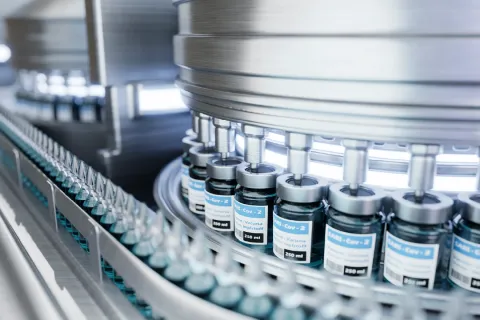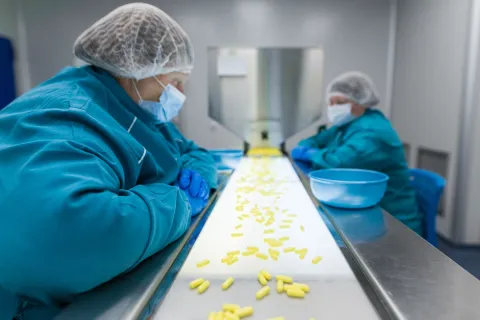
The pharmaceutical industry is highly regulated, and regulatory artwork plays a vital role in ensuring compliance and patient safety. In today’s ESG-driven and digital-first pharma landscape, sustainable artwork practices have become essential for both regulatory efficiency and environmental responsibility. However, the traditional methods of producing and distributing regulatory artwork are often unsustainable, both in terms of their environmental impact and their financial cost. By embracing sustainable practices, pharmaceutical companies can significantly reduce their environmental footprint, optimize resource utilization, and streamline their regulatory compliance processes. This has become even more relevant in 2025 as pharma companies are prioritizing ESG compliance, digital labeling, and greener packaging strategies worldwide.
Explore Our Green Artwork Studio
Consult Now
The Environmental Impact of Traditional Regulatory Artwork
Traditional regulatory artwork in the pharma industry is often produced using non-renewable resources, such as paper and ink. This can lead to deforestation and water pollution. Additionally, the transportation of regulatory artwork to various locations can contribute to greenhouse gas emissions. The continued reliance on single-use plastics, non-recyclable substrates, and chemically intensive printing processes adds to waste and increases the carbon footprint across the artwork supply chain.
As global health authorities push for more sustainable pharma packaging, companies are now expected to rethink artwork lifecycles to align with environmental standards and ESG frameworks.
The Financial Cost of Traditional Regulatory Artwork
The production and distribution of traditional regulatory artwork in the pharma industry can be expensive. This is due to the costs of materials, printing, and transportation. In addition, the need to update regulatory artwork frequently can add to the overall cost. Frequent label changes, regulatory updates, and package insert revisions further increase the cost burden, especially without digital version control or a structured labeling lifecycle management process.
Any errors or misalignment with regulatory requirements may lead to costly reprints, recalls, and supply chain delays — making traditional artwork operations financially inefficient in 2025’s fast-evolving regulatory environment.
A More Sustainable Approach to Regulatory Artwork
There are several ways to make regulatory artwork in the pharma industry more sustainable.
One approach is to use digital media, such as websites and apps, to deliver regulatory information. This shift away from printed materials not only reduces the consumption of paper and ink but also eliminates the need for transportation, further diminishing the environmental impact. Additionally, digital platforms provide the flexibility to update regulatory information in real-time, eliminating the need for frequent reprints.
Digital labeling and e-labeling solutions give companies the ability to publish updated patient information leaflets instantly, ensuring global pharmaceutical labeling compliance while reducing waste.
Another approach to making regulatory artwork more sustainable is to use sustainable materials. For example, regulatory artwork can be printed on recycled paper or plastic. Using eco-friendly substrates, water-based inks, or bio-based inks reduces chemical waste and supports sustainable pharma packaging initiatives.
Finally, regulatory artwork in the pharma industry can be made more sustainable by adopting a more strategic approach to production and distribution. Artwork can be produced in bulk and distributed to central locations, where it can be accessed as needed, reducing the need for frequent reprints and transportation.
Today, many companies are implementing centralized artwork management systems (AMS) integrated with regulatory change control systems, enabling better audit trails, real-time version control, and AI-powered artwork quality checks.
This reduces manual dependencies, eliminates duplicate effort, supports global sustainability goals, and enhances the entire labeling lifecycle management process.
Benefits of a More Sustainable Approach to Regulatory Artwork
There are many benefits to adopting a more sustainable approach to regulatory artwork in the pharma industry. These benefits include:
- Reduced environmental impact.
- Lower financial costs.
- Increased flexibility and accessibility.
- Improved communication of regulatory information.
- Enhanced corporate image.
- Greater regulatory compliance through automated version control and real-time updates.
- Support for global ESG reporting and sustainability commitments.
- Better audit readiness through integrated regulatory intelligence and labeling lifecycle management systems.
- Future-proofing artwork processes for AI-driven search, digital compliance, and global labeling harmonization.
Conclusion
The need for a more sustainable approach to regulatory artwork in the pharma industry is clear. By adopting sustainable practices in the production and distribution of regulatory materials, pharmaceutical companies can not only fulfill their regulatory obligations but also reduce their environmental impact, save money, improve the communication of regulatory information, and enhance their corporate image while also contributing to a healthier planet and a more sustainable future.
As AI-driven search (SGE/AI Overviews) and digital transformation reshape pharma communication, optimizing artwork and labeling content for accuracy, sustainability, and regulatory intelligence has become crucial.
By integrating green regulatory artwork strategies, e-labeling, centralized artwork management systems, AI-powered artwork checks, and sustainable packaging materials, pharma companies can significantly improve operational efficiency and meet global regulatory and ESG expectations.
To explore how Freyr’s AI-enabled Artwork Studio can help you strengthen sustainability, compliance, and efficiency across global markets, connect with our experts today.









